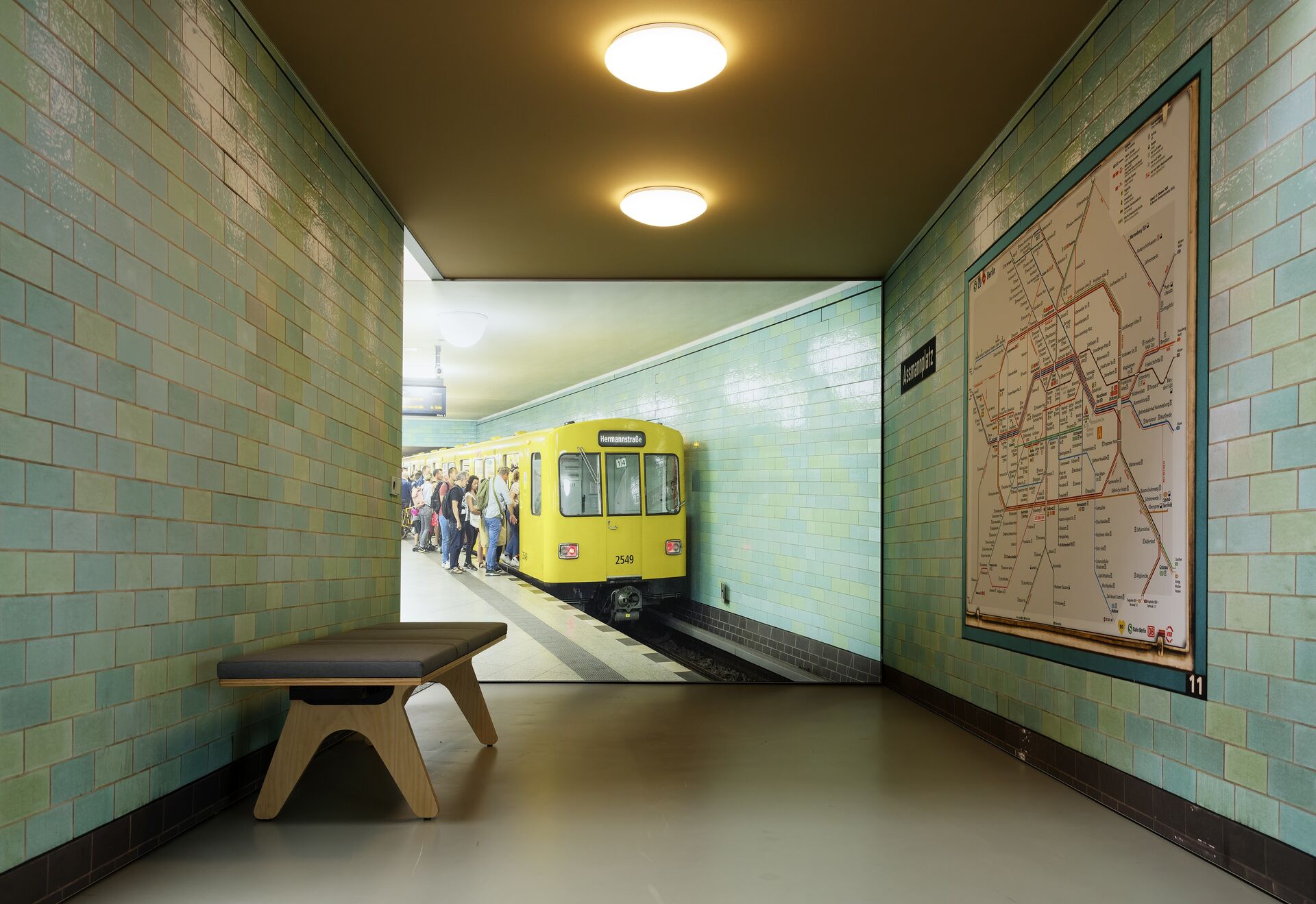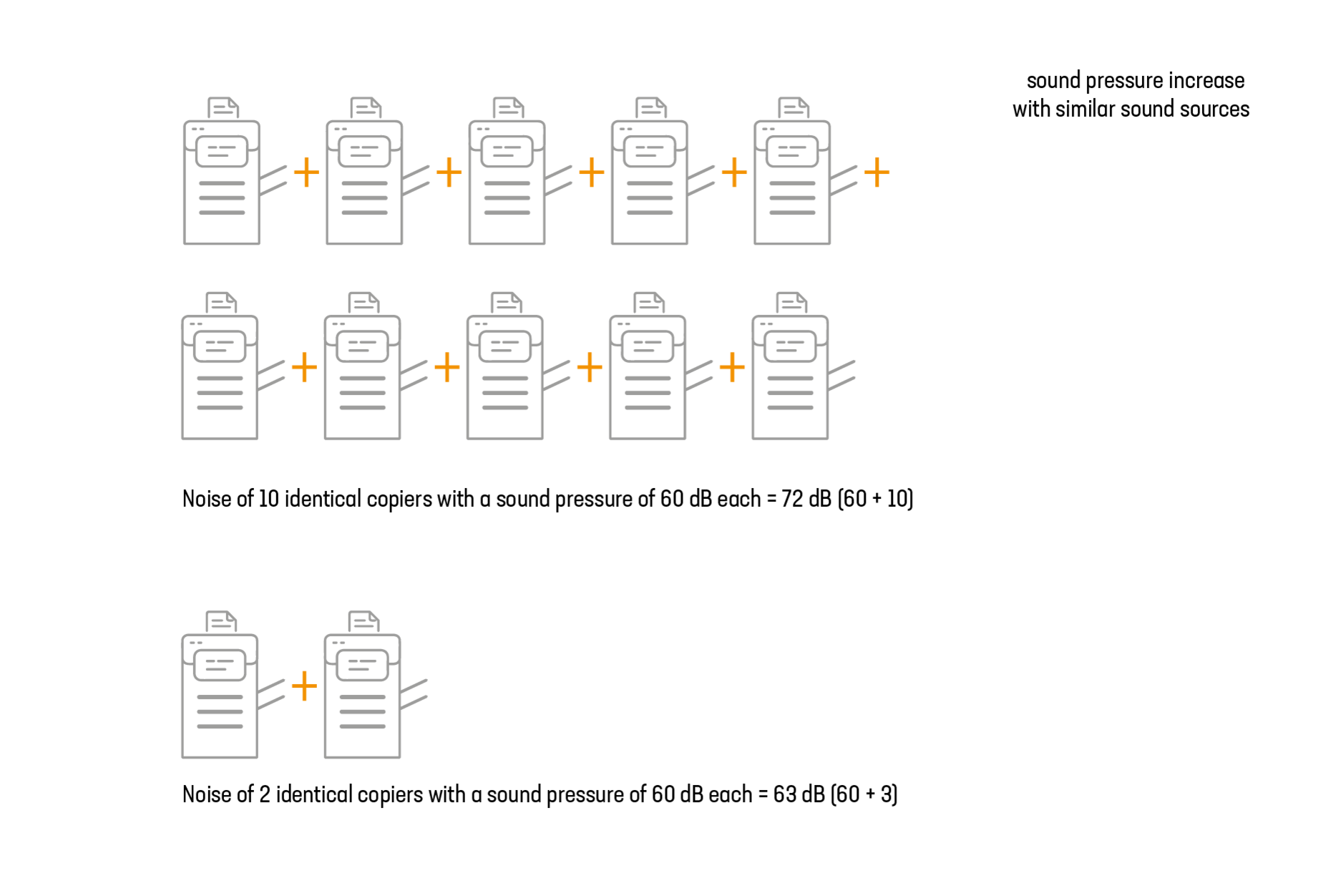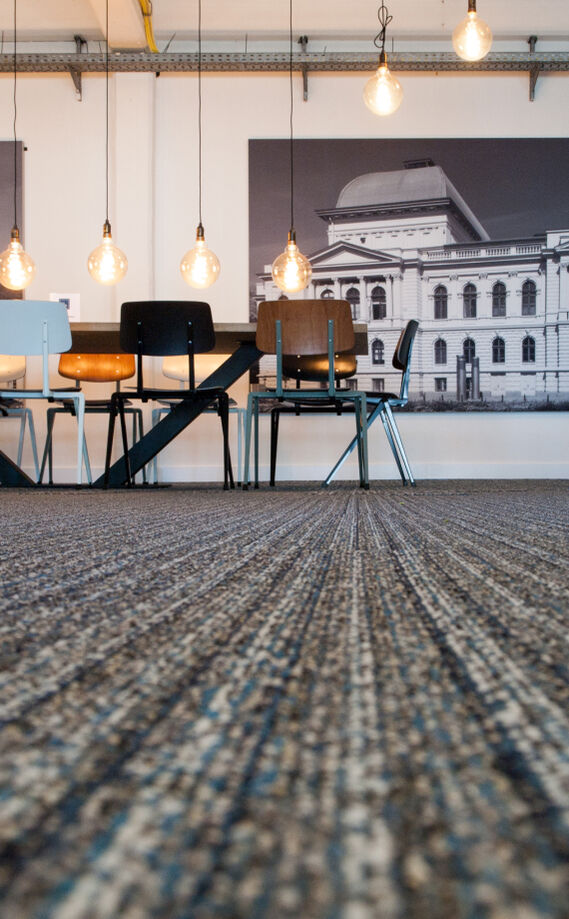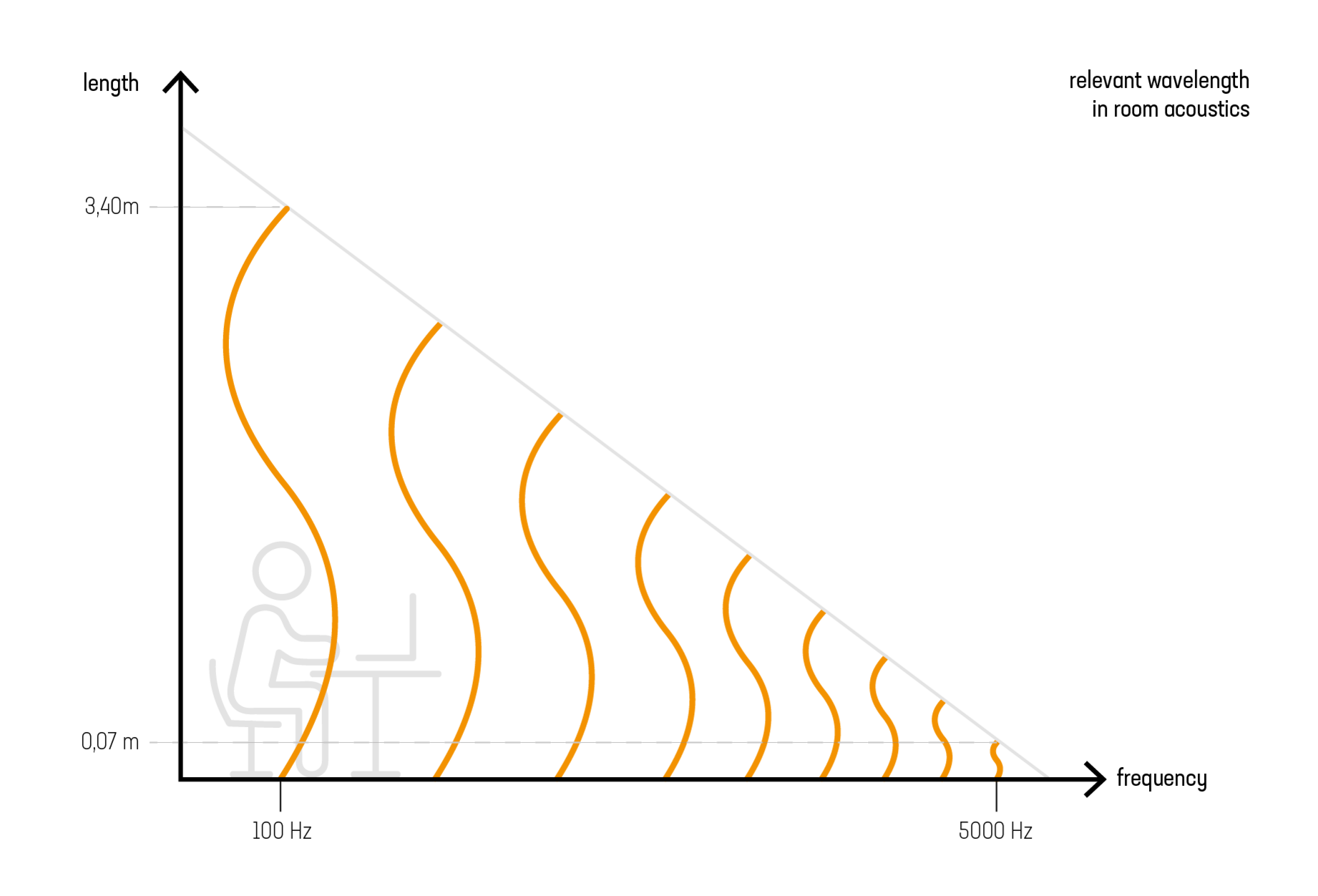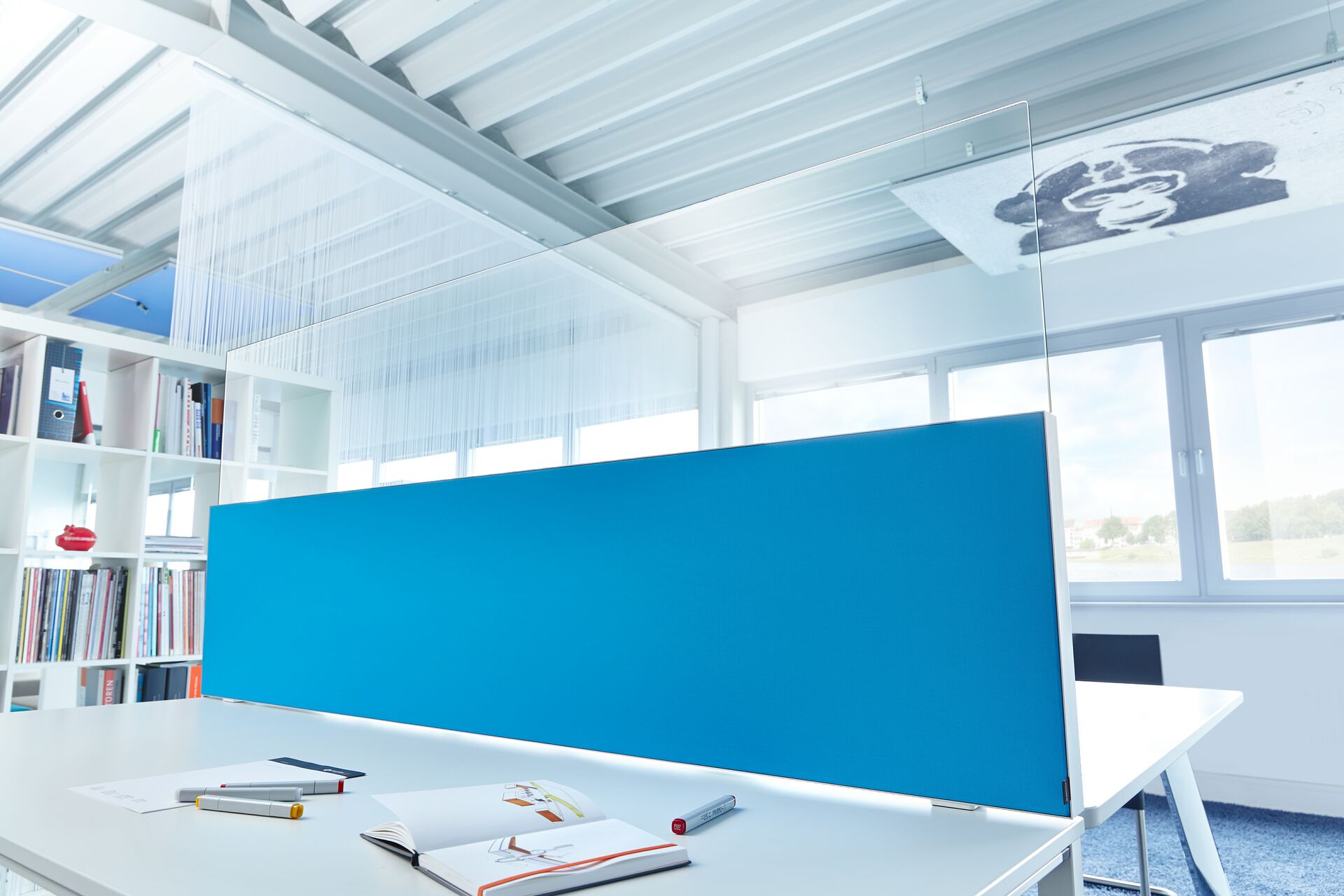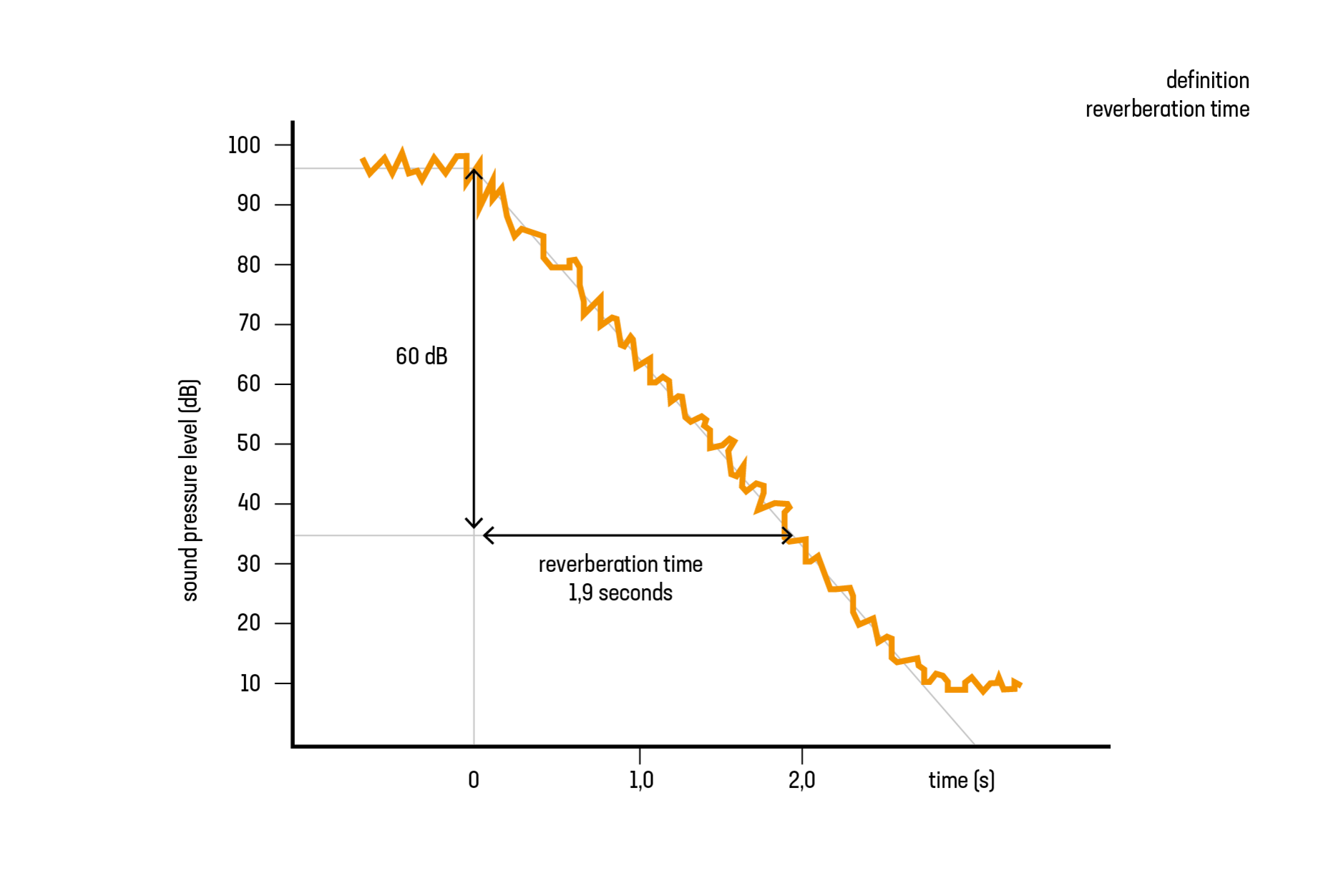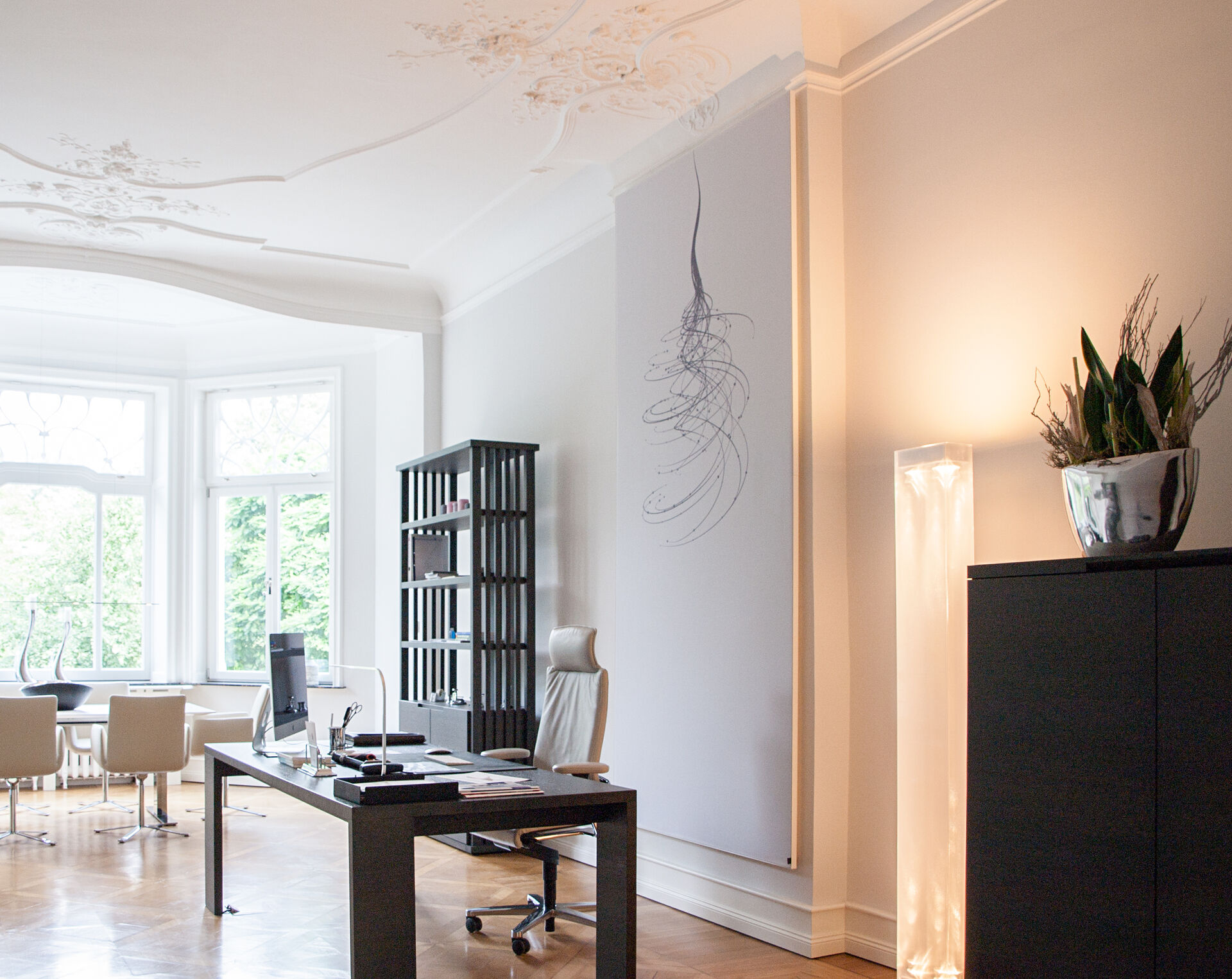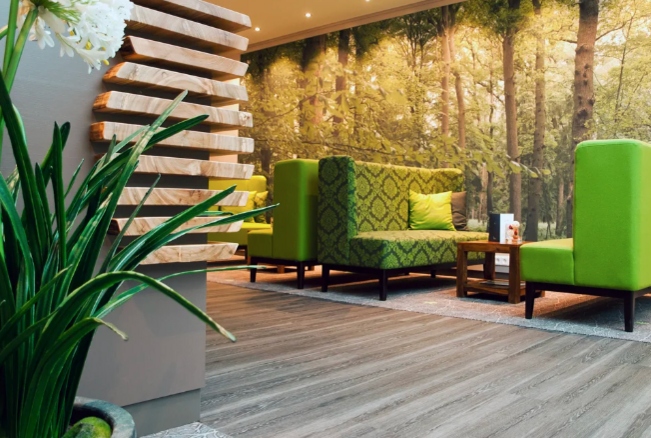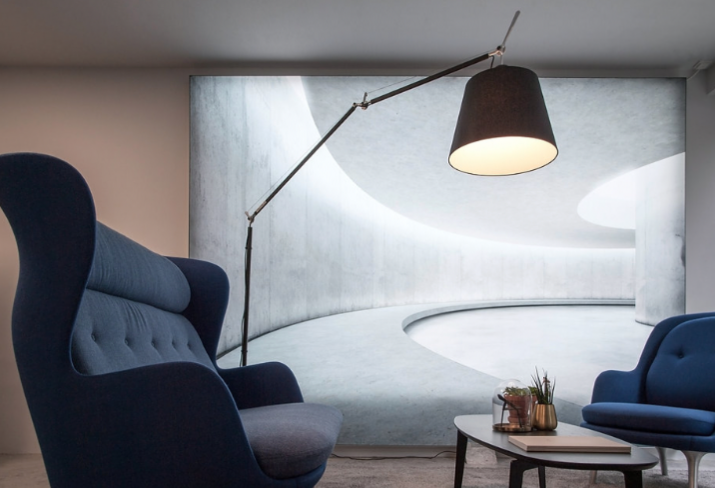Every room has its own unique sound. We’ll explain why that is and how you can optimize the acoustics.
Imagine you’re standing in an empty apartment during a viewing. You notice that conversations echo through the vacant space. It’s only when the apartment is furnished — with a sofa, carpet, and curtains — that the sound quality improves. In technical terms, this phenomenon is called audibility: What does a room sound like? What are the acoustic conditions? What sound sources exist, and when do they become disruptive? For instance, in an office, conversations might echo and become distracting. Or the opposite: you may struggle to hear your colleagues clearly, with everything sounding muffled.
At procedes i-d, we know that acoustic requirements are highly individual. Our goal is for you to use your spaces in a way that aligns with your vision. In this article, I’ll guide you through the world of room acoustics, covering essential concepts and showing you how acoustic quality can be enhanced. Plus, I’ll explain why costly on-site assessments aren’t always necessary.
What are you especially interested in ?
Pressure, waves, levels: Simplifing room acoustics
Frequencies – the foundations of room acoustics, part 2
Tailored solutions for acoustic challenges
How suitable is your space for its intended use?
We strategically eliminate "ping-pong surfaces" and improve your room acoustics
Pressure, waves, levels: Simplifying room acoustics
“The acoustics are bad.” I hear this phrase often, but let’s dig deeper: Is it hard to hear people next to you? Does your office sound like a cathedral? Or is there another issue at play?
Understanding room acoustics can be tricky, so let’s break down how sound moves through a space:
How loud is that? Understanding the decibel scale
Sound perception varies, but the decibel scale provides a reference:
- An aircraft engine tops the scale at 120 dB.
- A whisper measures around 30 dB.
- A regular conversation, at about 60 dB, sits comfortably in the middle.
Why two copiers aren’t twice as loud as one
If you have two copiers running simultaneously, they don’t double the noise to match an aircraft engine at 120 dB. Same principle: A ringing phone is also about 60 dB — but why don’t two phones in a room sound like a jet?
This is because the decibel scale is logarithmic, not linear. For every doubling of sound sources, the level only increases by 3 dB.
So two copiers at 60 dB each register 63 dB, and ten copiers would reach 70 dB. Even with 100 copiers, the level would only increase to 80 dB.
The same principle applies to conversations: 100 people talking at once would still only be around 80 dB.
Frequencies:
The foundation of room acoustics, part 2
Now, let’s revisit how sound travels. Imagine a sine wave fluctuating along a horizontal line. The faster these fluctuations, the higher the frequency. Figuratively speaking, it would look like a compressed accordion. These vibrations define the frequency. If a sound event consists of a single tone, it has its own frequency. This means: the tighter the waves are compressed, the more vibrations per second – the higher the frequency of the sound event or tone.
Frequency Unit: Hertz (Hz)
1 Hz = 1 oscillation per second
The exciting thing is how the (disturbing) sound waves are related to the frequencies. High frequencies have short sound waves, low frequencies have long sound waves. To illustrate this: 100 Hz produces a sound wave that is 3.40 m high. It is much larger than most rooms. This is why such a sound wave is difficult to break up, absorb and thus ensure a better surround sound. Sound waves with a frequency of 4,000 Hz, on the other hand, are only 7 cm high. A deep-pile carpet can already provide a remedy.
Tailored solutions for acoustic challenges
We have now refreshed our knowledge of how sound waves and their frequencies influence room acoustics. This graphic clearly illustrates the propagation and reflection of sound waves in a room: What interests us most in room acoustics are the wavelengths of human speech. These range from around 250 to 2000 Hz. Our hearing is especially sensitive within this frequency range. Since every room is different, each one requires an individual solution.
Attempts to somehow break sound waves don’t work
Let’s say someone is disturbed by conversations in the room. They try to use a low desk partition as a quick fix — but the result is disappointing. Why? Because partitions that are too small don’t interrupt the wave, allowing it to continue spreading freely through the room. The rule of thumb: a partition must be at least half the height of the wavelength in order to break it.
Acoustic solutions need precise calculation to be effective
It’s a myth that you can just add something — anything — to a room with poor acoustics and expect it to improve. Effective acoustic treatment needs proper planning. We can calculate how acoustic measures will perform. That way, we know exactly how — and with which tailored solutions — we can help you in a targeted and effective way.
A concert hall is not an office is not a retail store: How suitable is your space for its intended use?
Let me briefly summarize: You have a space. In it, conversations, phone calls, and other sound sources create acoustic events with different frequencies and varying wavelengths. You might be using this space as an office. But people are finding it hard to concentrate because conversations carry across the room too loudly and with too much reverberation. In our language: the room’s speech intelligibility is not well-suited to its purpose.
So how can this speech intelligibility be measured? What benchmarks can guide optimization?
The most important measurement for speech intelligibility is reverberation time.
Reverberation time tells us how long it takes for the sound level of an acoustic event to decrease by 60 dB. For example: a jet engine starts up and reaches 120 dB. How many seconds does it take for the sound level to drop by 60 dB?
Reverberation time and audibility – how well is your space suited to its intended use?
The optimal reverberation time of a room depends on how you use it. What’s known as a room’s audibility or acoustic quality indicates how suitable it is for certain types of use. In other words:
- What is the space used for?
- How well does it support that use?
Factors that influence audibility include the materials used for walls, ceilings, and floors, the furnishings and window areas, as well as the number of people present in the room.
If you notice that the acoustics in your space aren’t ideal, we can check that right away.
And we don’t even need to be on site – your room dimensions are all we need. Just send them over.
Then we pull out the Sabine reverberation formula. This not only saves you time, but potentially a good amount of money compared to hiring an acoustician just to determine the current state.
The Sabine formula was developed by physicist Wallace Clement Sabine. It divides the room volume by the total absorption surface and multiplies the result by a factor of 0.163. Or more simply put:
Room volume is usually easy to determine from a floor plan. What’s more interesting are the absorption areas, because walls, ceilings, and floors are often made of different materials—and each has its own sound absorption level.
The absorption coefficient indicates how much sound is absorbed at different frequencies. Example: hard concrete has a sound absorption coefficient of αw = 0.02. That means only 2% of the sound is absorbed—while the remaining 98% is reflected back into the room. An acoustic panel, on the other hand, has a coefficient of αw = 0.95 and absorbs 95% of the sound that hits it. Sounds complicated? Don’t worry — this is part of our daily business. And that’s why we know exactly how much additional absorption area your space needs, and how to implement it with the right solutions.
We strategically eliminate "ping-pong surfaces" and improve your room acoustics
Let’s say we’ve determined that your space needs ten square meters of our acoustic wall panels to reduce the reverberation time evenly across different frequencies. We wouldn’t just place that surface area randomly in the room. Acoustic measures are most effective when positioned where the sound originates. We also treat opposite surfaces to prevent sound from bouncing back and forth — what we call “ping-pong” reflections.
Our goal is always to create pleasant room acoustics combined with appealing interior design. That’s why we carefully consider how to integrate those ten square meters of absorber surface into your space — both effectively and elegantly.
The effectiveness of acoustic solutions matters. There’s little benefit in choosing products that seem cheaper at first glance but offer significantly lower sound absorption. You’d simply need more surface area to compensate for the lower performance — a hidden cost trap. And in many cases, there isn’t even enough free wall space available.
At procedes i-d, we focus on quality and transparency. Every one of our products and materials is independently tested and certified for effectiveness using the so-called reverberation room method. And we calculate exactly the surface area needed for your acoustic treatment to truly work.
The reverberation room method is used to determine a material’s frequency-dependent sound absorption coefficient.
A sample of the material is placed in a reverberation chamber. Then comes the test: How does it change the room’s reverberation time? From this, the material’s sound absorption capability is calculated.
For offices, the recommended reverberation time is standardized between 0.5 and 0.8 seconds.
A quick disclaimer for maximum transparency: situations like — just to exaggerate — a 40-meter-high oval atrium with 37 semi-open adjoining spaces can’t be reliably calculated with our standard method. If things get truly complex, or if you need independent certification for regulatory or architectural reasons, we’ll gladly connect you with our network of acoustic engineers and consulting firms. They can carry out precise measurements or simulations — especially in the case of new construction projects. We know our limits. Pretending otherwise wouldn’t be professional.
We treat you with professionalism and respect – always at eye level. We’re not here to simply install as many square meters as possible or push a sale. Our goal is to solve your problem effectively, together. To give you the best possible advice, we put ourselves in your position. Then we take a close look at what’s feasible — and how we can organize it in the smartest way.
Now you’ve had a small glimpse into how we approach room acoustics. Our thinking always starts with the key questions: What needs to go into the space? What dimensions are we dealing with? What’s realistically possible? And how much absorber surface is actually needed to make a real difference? Only then do we move on to the creative part — design. And you can be sure: we’re happy to go the extra mile for you, developing solutions that are tailored precisely to your needs. Because that’s simply part of who we are and in our DNA.


